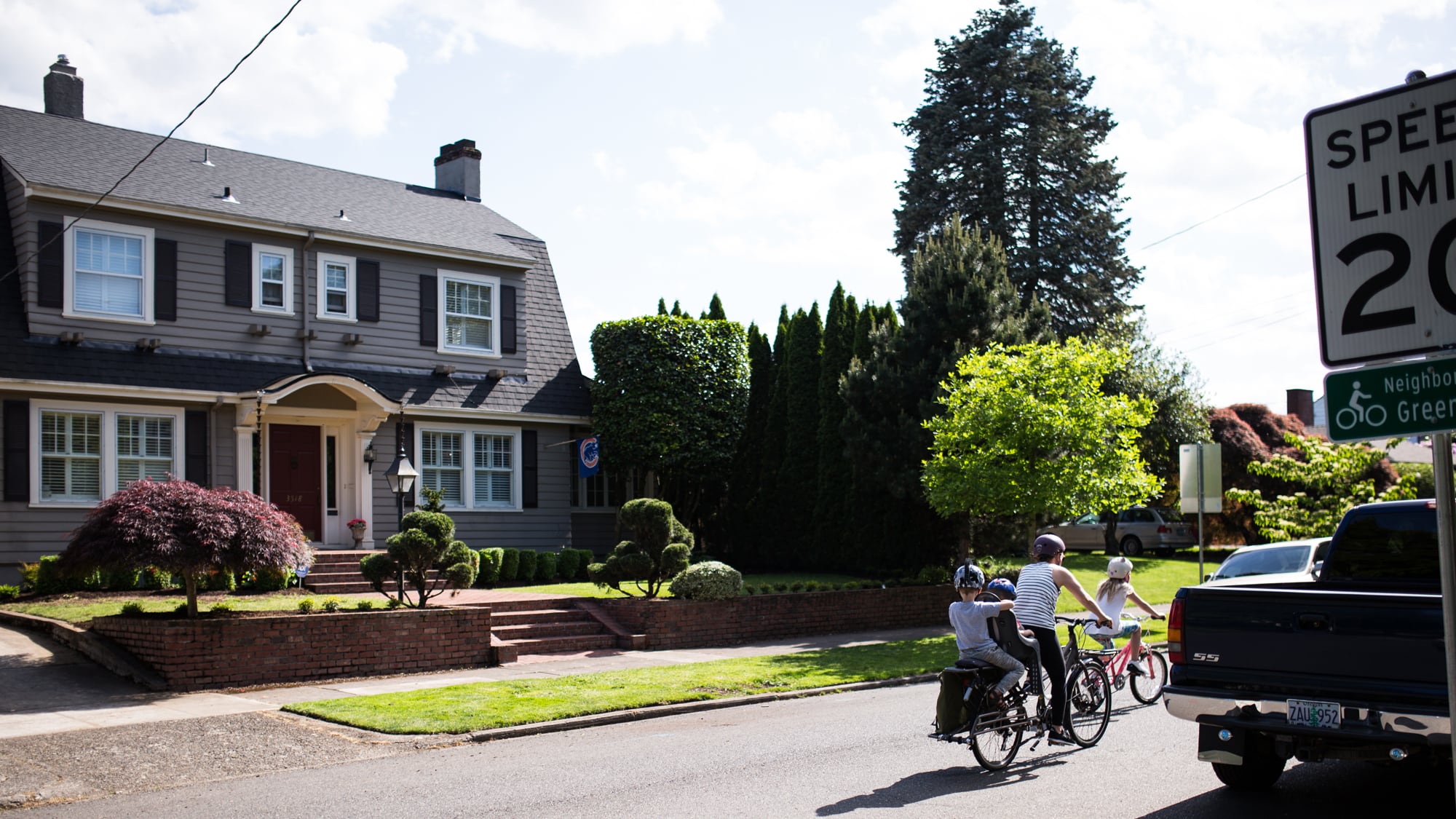Portland is a city that looks like a suburb.
More than 70 percent of the Rose City's residential land is designated as single-family housing—leafy blocks and low-slung bungalows with big porches and rolling backyards.
But it wasn't always this way. And the city's residents and planners are engaged in furious debate over the extent to which Portland should go back to the future.
"I never expected it not to be controversial," says Robert Liberty, director of Portland State University's Institute for Sustainable Solutions and Urban Sustainability Accelerator. "We are in a new century where we need to rethink single-family zoning. This city, unlike others, is willing to tackle this question."
Portland once allowed development of far denser housing. Look at the garden apartments scattered throughout Portland's residential neighborhoods as dinosaur fossils.
But the city's zoning code currently prohibits much of that construction, thanks to rules that favored single family homes passed by the City Council in 1959.

Those rules created the Portland we know. But they also fence people out—especially the working class.
Now the city's current planning project, called the residential infill project (RIP for short), has become a flashpoint over the future of Portland.
Homeowners are so angered by the years-long process that one of them recently compared it to a war crime.
In fact, the RIP is a series of half measures and compromises that seem unlikely to satisfy anybody—or fix Portland's housing shortage.
The Planning and Sustainability Commission closed testimony on it last week and is scheduled to vote on it in July. Here's why that vote isn't going to shut anybody up.
How would this plan change the look of a central Portland neighborhood?
The new rules could effectively rezone more than half the city's neighborhoods.
But the changes would be incremental: duplexes on single-family lots, triplexes where duplexes are allowed, and both a basement unit and a backyard cottage where only one is currently allowed.

Supporters argue that, if done right, the project will result in a gradual shift over time, but won't change anything soon.
"It probably won't change the look and feel much at all—and at most it'll only change things significantly over the course of like 20 to 25 years," says Michael Andersen, senior fellow at the Sightline Institute.
But ask some opponents and they suggest RIP will have the same effect on central Portland that Kilauea had on Hawaiian neighborhoods. They warn that demolitions will speed up—along with the blight of gentrification.
"It will become much more dense," says Barbara Strunk of United Neighborhoods for Reform, which organized four years ago to block demolitions. "We will lose green space, both garden space and play space and trees. We'll have a lot more cars parked on the street, and much more traffic."
How many more units would the plan produce?
The city's official study projects 1,700 more single-family homes, duplexes and triplexes would be developed citywide over the course of the next 20 years than would be built under current zoning.
That's 85 units a year. Why would anybody get mad about a number that small?
Two words: McMansions and demolitions.
"Many are reacting to current growth and development trends, such as small homes being demolished and replaced with larger houses or very large duplexes," says city planner Morgan Tracy. "Some see this plan as allowing more of this incompatible change to occur."
There's a fundamental disagreement over what new development does in this city. The consensus among city planners and economists is that adding more supply can help stabilize the city's housing prices. They hope adding new kinds of construction will create more affordable options in some pricey, close-in neighborhoods.

But many homeowners see creating any new options as increasing the incentive for their neighbors to sell their properties to developers, who will tear down existing homes and replace them with expensive, gaudy new houses.
Planners have tried to slow the McMansion-izing of Portland neighborhoods under RIP by limiting the size of new houses as well as how close to the front curb they can be built.
Critics aren't placated. They say the city hasn't done enough to limit size.
Meanwhile, housing advocates are worried the size limits will create fewer options for homes with multiple units in them.
If new supply keeps housing costs low, why is the city proposal not being applied to neighborhoods most at risk of gentrification?
Many neighborhoods east of I-205, along with parts of Cully and St. Johns, aren't included in the proposed zoning plan. That's baffling to many observers, because planners argue RIP is supposed to create affordable options—and housing prices are increasing at least as fast at the edges of the city.

"This part of the plan is not carefully designed at all," says Madeline Kovacs, program coordinator of Portland for Everyone, a group pushing for more housing. "We need a strategy that focuses on vulnerable populations wherever they live."
City planners say they've avoided touching neighborhoods that are rapidly changing—and instead are trying to spur stagnant neighborhoods that aren't adding affordable housing options.
So how could the plan go further to encourage affordable housing?
The Portland Housing Bureau is asking to increase the size and density of houses allowed in the middle of blocks—not just the corners—if affordable units are included in a house or duplex. Affordable housing developers are asking for similar changes.
What everybody agrees on is the benefit of allowing backyard cottages and basement units. They're mostly invisible from the street. They don't cause the same panic as demolition, and no one is displaced to build them.

Here's the problem: City officials haven't yet come up with a way to finance construction of these "accessory dwelling units." So unless homeowners are sitting on a pile of cash, their ability to build is limited. (Getting a bank loan to build an ADU can be difficult, because the value of ADUs isn't as well-accepted by banks as a standard home construction project.)
A proposal to fund ADUs from Commissioner Chloe Eudaly's office did not get included in the mayor's budget.
"The 'if you zone for it, they will come' strategy won't work for infill," says Eudaly's chief of staff, Marshall Runkel. "We need to develop a financing mechanism for ADUs that's accessible to people who don't have access to capital now."

